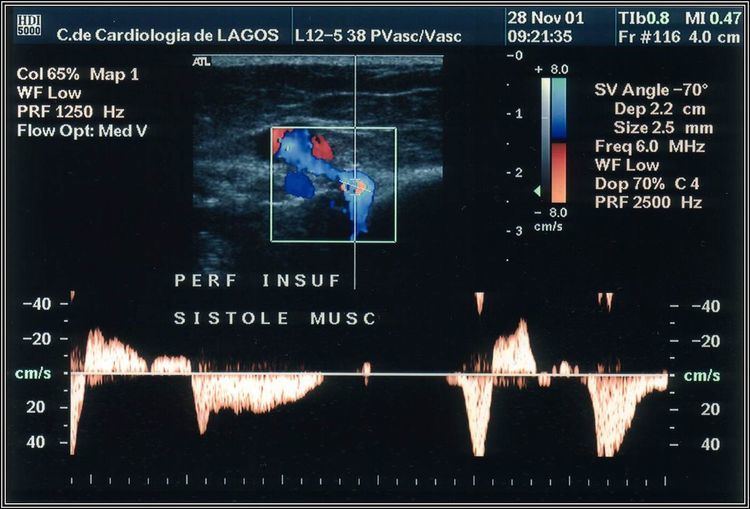 | ||
Perforator veins are so called because they perforate the deep fascia of muscles, to connect the superficial veins to the deep veins where they drain.
Their role is primordial in maintaining correct blood draining. They have valves which prevent blood flowing back (regurgitation) from deep to superficial veins in muscular systole or contraction.
They exist along the length of the lower limb, in greater number in the leg (anatomical ref to below knee) than in the thigh.
Some veins are named after the physician who first described them:
Others have the name of the deep vein where they drain:
When the valves of perforator veins become incompetent they can cause venous reflux when the muscles contract. This has been explained by Mark Whiteley as "active venous reflux". The resulting reflux can cause a rapid deterioration in an existing varicose disease and be responsible for the development of venous ulcers.
In the past, when varicose vein surgery is undertaken, the surgeon carefully ligated all perforators, but some believe that you can use conservative techniques to treat varicose disease use perforators to drain the superficial venous system. In this case, lower limbs venous ultrasonography plays an important role in evaluating which continent perforators can be used.
However, increasing evidence (see below) is starting to favor the treatment of incompetent perforator veins by minimally invasive techniques such as TRLOP.
Clinical significance
Whether incompetent perforator veins (IPVs) require treatment or not is controversial, particularly when associated with the treatment of varicose veins. However research has shown that there is a clear association between the presence of IPVs and recurrent varicose veins.
Before 1985, the ligation of IPVs needed open surgery. In 1985, G. Hauer described the Sub-fascial endoscopic perforator vein surgery (SEPS) technique allowing IPVs to be clipped through a small incision.
SEPS was superseded in 2001 by a minimally invasive technique using pin hole surgery, called TRansLuminal Occlusion of Perforators (TRLOP) which by 2009 had shown to be as effective as SEPS in a 5-year study. As TRLOP can be performed under local anaesthetic and under ultrasound guidance, the advantages over the more invasive and painful SEPS were clear.
In 2007 there was an attempt to rename TRLOP as PAPs (percutaneous ablation of perforators) but PAPs was seen to be merely to be a copy of the already described TRLOP procedure.
